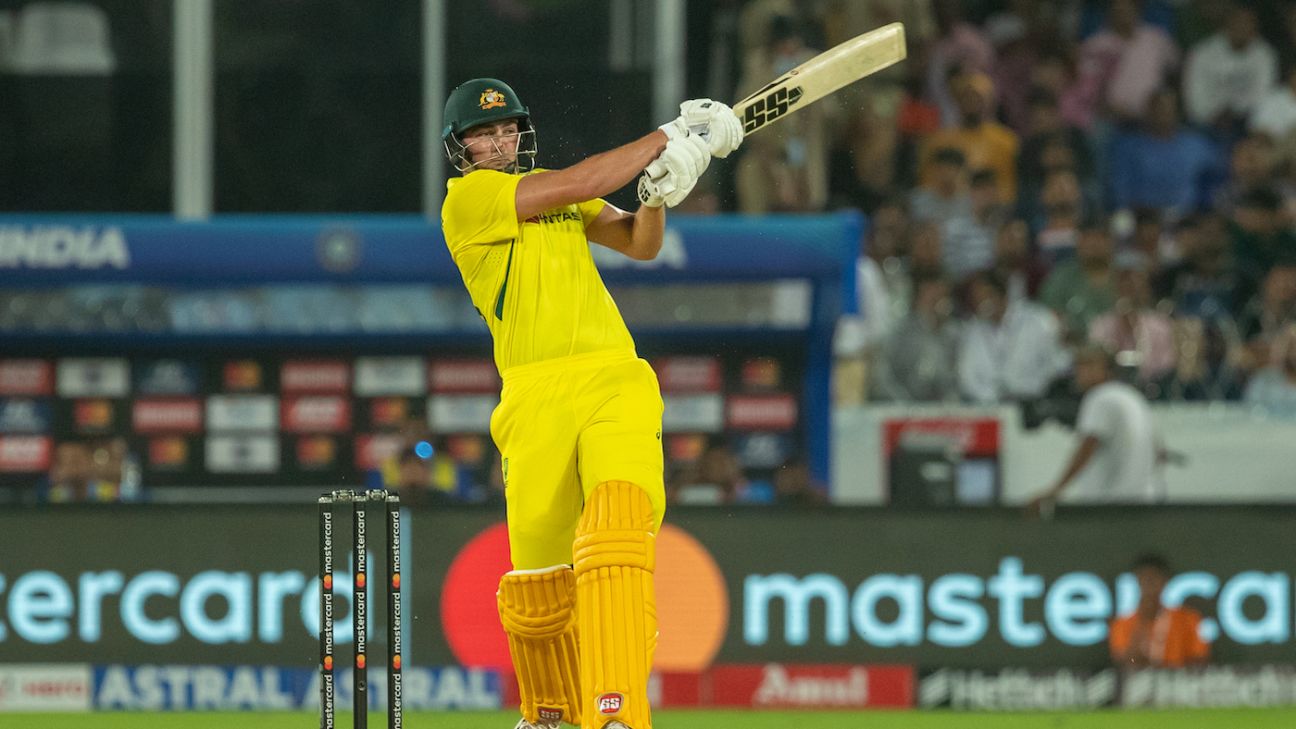Green’s opening salvo a long-term bonus and a short-term shadow
It was hunch that had been discussed previously by Australia and Perth Scorchers. “It’s probably opportunistic, the way that he’s coming in with the opening position with obviously Davey Warner not being here and a couple of other players in our World Cup 15,” Australia coach Andrew McDonald said after the final T20I in Hyderabad. “Fortuitous, but he’s taken that opportunity. We thought he had the skill when we did our strategy before we come over here. And he’s taken on some of the best bowlers in world cricket. You could argue Jasprit [Bumrah] is one of the best T20 bowlers ever. So to be able to do that, work your way through that situation again tonight, and do it two out of three times is very impressive and bodes well.”
But as of now, Green is not part of Australia’s 15-player World Cup squad. He is scheduled to be appearing in the Sheffield Shield for Western Australia when Australia’s T20 squad reconvenes in Queensland next week for matches against West Indies. After what he did against India, Australia’s selectors might be secretly praying for an injury to one of their batters so they can somehow get him in. But even then, there is no place for him at the top of the order with Warner returning and captain Aaron Finch’s place secure. Green will cast a large shadow over the team should he not end up in the squad.
David delivers as expected
Australia’s selectors were keen to see how David fitted into an established middle-order, albeit in the absence of Marcus Stoinis. His partnerships with Wade, who had an exceptional series, and Daniel Sams showcased his ability to work through the gears alongside both senior and junior partners, playing different roles when the situation required. It would seem ridiculous to consider leaving him out of Australia’s first-choice World Cup XI now. But the question is, who misses out?
Smith still vulnerable
Australia’s view of his power-hitting ability was evident in the eight-over-a-side sprint in Nagpur when he was dropped down the order to No. 6. He then scored at less than a run a ball in Hyderabad despite facing 10 balls in an innings where he was also dropped at backward point. If Smith is to play in the World Cup it could come at the expense of David, while Green will be playing Shield cricket. It would be an extraordinary show of faith from Australia’s selectors to make that call.
Death bowling questions
Both Australia and India struggled with the ball at the death in this series although McDonald acknowledged it was a very tough series for the bowlers in general. “There was really no place to hide for bowlers and particularly at the death coming up against Hardik [Pandya],” he said. “But I think we worked our way through some plans. We saw some good results with some of the plans that we implemented that may be able to transition to the World Cup.
“The connection between here and Australia might slightly differ with a little bit more bounce, so some different tactics. Mitchell Starc clearly comes back into the picture, he’s been one of our best death bowlers, so we feel like we’ll get reinforcements there. But I think most death bowling attacks are under the pump with the high skills of the batters these days. Are we keen to get better at death bowling? The answer to that is yes. But we just encourage our guys to make good decisions, execute, and see what happens.”
While’s Starc’s return does alleviate some issues, the fact that Green, Sams and Nathan Ellis were asked to bowl in the final two overs of each match more often than Josh Hazlewood and Pat Cummins, when none of them are in the World Cup 15 does raise more questions than answers to McDonald’s death bowling conundrum. Australia’s other potential option in the World Cup squad, Kane Richardson, did not play a single game in the series due to a side injury that he suffered in the warm-up in game one.
Alex Malcolm is an Associate Editor at ESPNcricinfo
